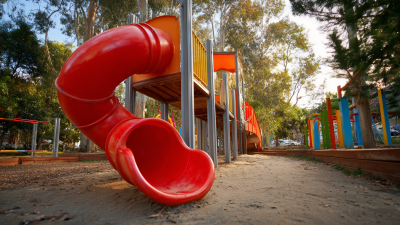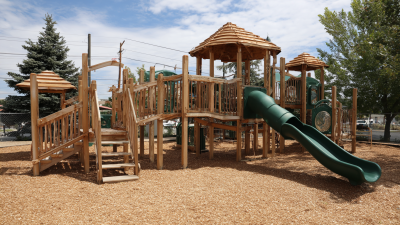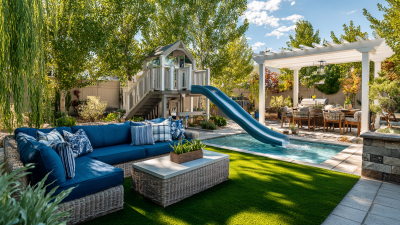 +86-13901441113
+86-13901441113




Creating an engaging and developmentally appropriate playground in the park is essential for fostering children's physical, social, and emotional growth. According to the National Recreation and Park Association, play is crucial for children's development, as it aids in building cognitive skills and promoting physical health. Additionally, research indicates that children who have access to well-designed play environments are 15% more likely to be physically active and exhibit improved social skills compared to those who lack such facilities. With busy lifestyles and increasing screen time, it is vital to invest in thoughtful playground designs that encourage outdoor play and interaction. This blog will explore seven essential tips to create the ultimate playground in the park that not only provides fun but also supports holistic child development.

When designing the ultimate playground for child development, selecting the right location is paramount. According to the American Academy of Pediatrics, accessibility and safety are critical factors that can significantly influence children's frequency of play. Ideally, the playground should be placed within close proximity to residential areas, schools, and community centers, ensuring that children have easy access while reducing potential travel hazards. Additionally, choosing a location that is well-lit and visible from main thoroughfares can minimize potential safety issues.
Tip: Consider incorporating safety features like soft ground materials and barriers from busy streets, as studies show that well-designed safety measures can reduce playground injuries by up to 50%.
Furthermore, incorporating amenities such as walking paths and seating areas can enhance the social aspect of the playground, encouraging parents and caregivers to supervise children effectively. A survey by the National Recreation and Park Association highlighted that 83% of parents prefer parks that are easily accessible and equipped with well-maintained facilities.
Tip: Evaluate the surrounding environment before finalizing the location; look for natural shade, water sources, and cleanliness—elements that contribute to a more inviting and safe play area for children.
Incorporating natural elements into playground design is a key strategy for enhancing children's learning and development. Natural play spaces, featuring materials like wood, stone, and plants, create an environment that encourages exploration and creativity. These elements not only provide a more stimulating atmosphere than traditional playgrounds but also foster a connection between children and the outdoors. For example, climbing trees or navigating through a sandy area enriches sensory experiences and promotes physical development.
Moreover, blending playgrounds with nature can enhance cognitive skills. Studies have shown that natural settings stimulate curiosity, leading children to engage in problem-solving and critical thinking. By integrating features such as water play, rock formations, and native flora, children can develop a personal relationship with nature, learning about ecosystems, weather patterns, and biodiversity through direct interaction. This immersive approach not only supports physical and social development but also nurtures a lifelong appreciation for the environment, helping children become mindful stewards of the world around them.

When designing the ultimate playground to foster child development, diverse equipment selection is crucial. Playgrounds should feature a variety of structures that promote not only physical skills but also imaginative play. From climbing apparatuses that enhance coordination and strength to balance beams that encourage agility, each piece of equipment should cater to different developmental stages. By incorporating ride-on toys and interactive elements, children can engage their bodies and minds in creative ways, fostering a love for physical activity from an early age.
Moreover, understanding the principles of free play is essential in designing these spaces. Free play allows children to explore their interests and interact with their environment freely, making choices that can lead to greater self-confidence and social skills. Research suggests that the type of playground influences children's play styles, highlighting the importance of diverse and nature-inspired designs that cater to varied interests and abilities. Such environments not only enhance motor and sensory development but also support overall well-being, making a thoughtfully designed playground vital for encouraging healthy, imaginative play among children.
Creating an inclusive playground is essential for fostering an environment where all children can play and grow together, regardless of their abilities. The design should prioritize accessibility, ensuring that children with physical, sensory, or cognitive challenges can engage fully in play activities. This can be achieved by incorporating features such as wheelchair-accessible pathways, tactile play elements, and quiet areas designed for children who may feel overwhelmed in a bustling environment. These thoughtful inclusions not only benefit children with disabilities but enhance the overall experience for everyone.
In addition to physical accessibility, it’s crucial to consider diverse play opportunities that cater to various developmental needs. Incorporating equipment that encourages social interaction, such as group swings or interactive panels, promotes teamwork and communication skills. Furthermore, color schemes and sensory-rich materials can create inviting spaces that stimulate creativity and exploration. By embracing a holistic approach to playground design, we can ensure that every child, regardless of their ability, finds joy and enrichment in their playtime.
 Engaging community input is pivotal when designing playgrounds that cater to child development effectively. Involving parents and experts not only ensures that the playground meets the needs and preferences of the community but also enhances children's physical, social, and emotional well-being. According to a 2021 report by the American Academy of Pediatrics, play is fundamental to healthy development, providing essential opportunities for children to engage in active play, strengthen relationships, and explore their environment. By soliciting input from local families and child development specialists, planners can create spaces that reflect the desires of children and their caregivers.
Engaging community input is pivotal when designing playgrounds that cater to child development effectively. Involving parents and experts not only ensures that the playground meets the needs and preferences of the community but also enhances children's physical, social, and emotional well-being. According to a 2021 report by the American Academy of Pediatrics, play is fundamental to healthy development, providing essential opportunities for children to engage in active play, strengthen relationships, and explore their environment. By soliciting input from local families and child development specialists, planners can create spaces that reflect the desires of children and their caregivers.
Additionally, involving experts such as pediatricians, child psychologists, and landscape architects can yield high-quality designs that incorporate safety regulations and developmental milestones. A survey conducted by the National Association for the Education of Young Children revealed that 85% of parents believe outdoor play impacts their children's creativity and problem-solving skills. By integrating expert advice into the planning process and conducting community forums, local governments can build inclusive playgrounds that foster creativity, physical activity, and social interaction, all while ensuring that these spaces are accessible and enjoyable for all children.





